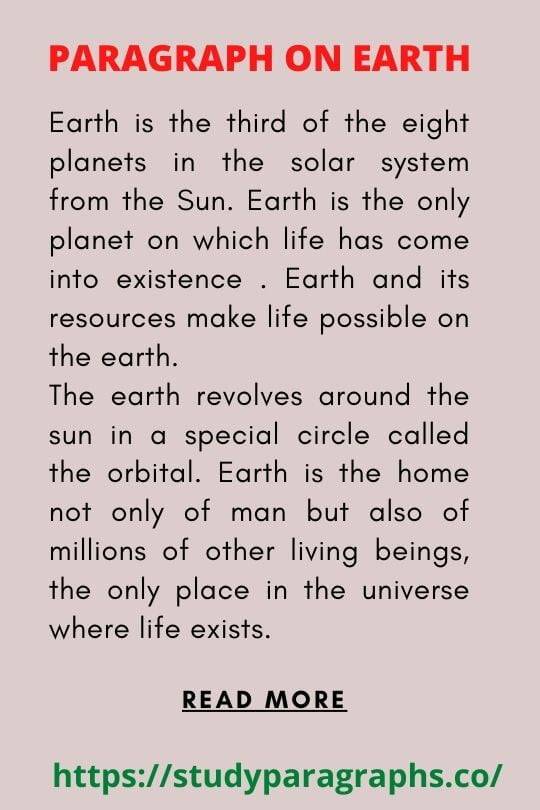Informative Paragraph On Neptune Planet For Students
Neptune is the planet closest to the sun. Like Uranus and Pluto, this planet was considered a planet but it has now been reclassified as a large moon of Jupiter. It is thought that Neptune was formed when an ice giant collided with a more rocky object.
Short Informative Paragraph About Neptune | Special Things To know about
What is Neptune?
Neptune is the eighth and farthest known planet from the Sun in the Solar System. It is named after the Roman god of the sea. Neptune is classified as a plutino, meaning it is smaller than Pluto but larger than a dwarf planet. It is also the largest known planet in the Solar System that does not have enough mass to become a dwarf planet. Neptune was discovered in 1846 by German astronomer Johann Galle within Johann Elert Bode’s Hawaiian telescope series. It was first observed from Earth when James Cook visited in 1769 and again when Russian astronomer Nicolas Louis de Lacaille visited in 1792, his term for the planet has been adopted since then. The most recent exploration of Neptune came in 1989, during which time vast cloud-tops were photographed from both above and below the planet’s atmosphere using NASAs
What is the history of Neptune?
The planet was discovered on September 23, 1846, by Johann Galle and Heinrich d’Arrest, both of whom used calculations by Urbain Le Verrier to locate Neptune. More recently, the planet was discovered by Clyde Tombaugh in 1930. The second observation was made by Walter M. Scott in 1949.
What are the physical characteristics of Neptune?
Neptune is a gas giant with an equatorial diameter of 49,532 kilometers (30,761 miles). The planet is almost twice as far from the Sun than it is from the Earth, so its surface temperature ranges between -230 and 2000 degrees Celsius (-390 and 393 Fahrenheit). The atmosphere of Neptune has a composition of roughly 96% hydrogen and 4% helium.
Neptune orbits around the Sun in 30 years at a distance ranging from 5.2 to 4.9 AU (5,268 to 5,047 million km) with an average distance of 5.03 AU (5,033 million km). Its orbit has an eccentricity of 0.04 and a shape that is close to a circle but with a large bulge pointing toward the Sun. Neptune takes 165 Earth days to make one full revolution around the Sun; its
What are the orbital characteristics of Neptune?
Neptune has the longest orbital period of any planet in the Solar System, taking 164.8 years to complete one orbit around the Sun. At its maximum distance from the Sun, Neptune took 165.8 years to complete one orbit, compared to 164 years for Venus, and 156 years for Earth.
Neptune’s Orbit: Neptune is the farthest planet in the Solar System (along with Uranus), at a mean distance of 2.78 billion km or 97.5 AU from the Sun. Because of this significant orbital distance, Neptune is technically not considered a planet by some scientists who consider it too small to be considered as such.. As a result, external bodies do not have significant gravitational effects on Neptune; none of Neptune’s moons are known to be captured or destroyed by it or any other body in the Solar System. The only known significant gravitational perturbations on
What are the moons of Neptune?
Neptune has 14 moons, the largest of which is Triton. The moons of Neptune are a bit more difficult to classify as they are not exactly “real” planets, but rather large pieces of floating ice. They can be divided into four groups based on their distance from the planet:
1. Outermost: Naiad, Thalassa and Despina;
2. Alongside: Galatea, Larissa and Proteus;
3. Intermittent: Charon; and
4. Innermost: Triton (largest) and Telesto.
Conclusion
Neptune is one of the most mysterious and fascinating planets in our solar system. It’s made up almost entirely of ice, meaning that it has very little atmosphere or water. This makes Neptune incredibly difficult to study, as many of its features are hidden beneath thick layers of ice. However, thanks to space probes like Voyager and Hubble, we’ve been able to gain a great deal of knowledge about Neptune and its environment.

Hello! Welcome to my Blog StudyParagraphs.co. My name is Angelina. I am a college professor. I love reading writing for kids students. This blog is full with valuable knowledge for all class students. Thank you for reading my articles.




